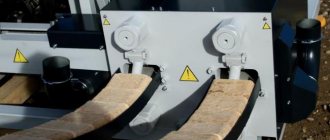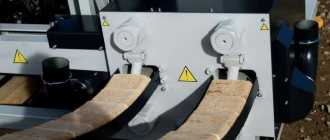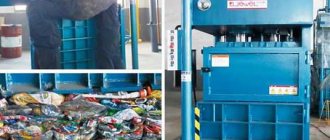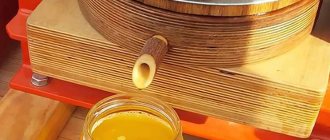This device is intended to help in catching fish, mainly silver carp. The appearance is as follows : a cylinder into which nutritional additives for fish and a flavor enhancer are added. After filling it is compacted with a press. In the center, along the axis, there is a hole through which the fishing line is pulled to install the hook.
Making a mold for technoplankton
When it gets into the water, the cylinder begins to dissolve, forming a light suspension that imitates natural plankton. But for repeated use it is necessary to achieve maximum bait density. Therefore, before making your own, you need to choose the right mold.
You can make a similar press design with your own hands or purchase a ready-made model. In the first case, you will need to correctly calculate the dimensions of all components. For pressing, you can use a bottle car jack.
Dimensions of components:
- hollow cylinder. Inner diameter – 27 mm. Wall thickness – 5 mm. The optimal height may be 60 mm;
- support nickel. Must have a rounded inner surface. To create reliable support, it is recommended to make the overall dimensions 4-5 mm larger than those of the working cylinder. A rod is welded in the center, which will form a longitudinal hole in the technoplankton. Its length is usually 50 mm;
- upper part of the press for technoplankton. The outer diameter of this cylinder must coincide with the inner diameter of the supporting one - 27 mm. It is also recommended to make the inner edges oval.
These components must be carefully matched to each other. After pressing, technoplankton has smooth edges and a dense structure.
The average cost of a ready-made mold is 800-1000 rubles, depending on the size and material of manufacture.
Equipment for the production of technoplankton. (Views: 1)
STALKER6655
Re: LOB PHISHING – Catching Silver Carp
Made in Ulyanovsk. Rather, this is a work of art:
40mm with a 43mm cone with a length of 110mm - it cost me $33, before the price increased - there was a lot of demand.
Attachments
andreu555
Club Member
Orestes
Re: Technoplankton and other baits for catching silver carp
I made this 20-ton press. 15 presses without problems. The jack in the photo is redundant.
Attachments
Dilsh
Re: Technoplankton and other baits for catching silver carp
Assembled a bed for pressing technoplankton:
Bed dimensions: 685×320×180 mm (H×W×D)
Materials used: 1. Channel, 18U 2. Threaded studs, M30, strength class 8.8, galvanized 3. Steel plates, St20, 20 mm thick 4. Nuts, M30, strength class 8, galvanized 5. Washers, M30, galvanized
The design of the frame is designed for a maximum load of 25 tons with a safety factor for tensile studs k=2.7, for breaking threads of studs k=4.55, shearing of nuts k=6.18.
The jack used is from Matrix, 25 tons.
The design turned out to be strong, stable, although quite heavy.
For those interested, I am ready to send you a link to an online calculator for calculating the strength of threaded rods in a personal message.
Attachments
gegav
Re: Technoplankton and other baits for catching silver carp
Assembled a bed for pressing technoplankton:
Bed dimensions: 685×320×180 mm (H×W×D)
Materials used: 1. Channel, 18U 2. Threaded studs, M30, strength class 8.8, galvanized 3. Steel plates, St20, 20 mm thick 4. Nuts, M30, strength class 8, galvanized 5. Washers, M30, galvanized
The design of the frame is designed for a maximum load of 25 tons with a safety factor for tensile studs k=2.7, for breaking threads of studs k=4.55, shearing of nuts k=6.18.
The jack used is from Matrix, 25 tons.
The design turned out to be strong, stable, although quite heavy.
For those interested, I am ready to send you a link to an online calculator for calculating the strength of threaded rods in a personal message.
Dilsh
Re: Technoplankton and other baits for catching silver carp
I want to share one of four, truly “working” recipes, as well as the technology for making your own technoplankton at home. The efficiency of the “work” of technoplankton was achieved experimentally and practically as a result of painstaking work over a period of 3 months. Technoplankton was tested in commercial reservoirs located near the city of Almaty.
So, in order. Technoplankton parameters:
Shape – conical; Height – 50 mm; Diameter D1 – 32 mm; Diameter D2 – 34 mm; Weight – 50 g; Dissolution time in lake water at a temperature of +24 degrees Celsius –
90 min; Natural dried dill is used as a flavoring additive.
Equipment and tools used:
1. Pressing bed. 2. Bottle type jack with a lifting capacity of 25 tons. 3. Mold. 3. Kitchen scales. 4. Teaspoon. 5. Funnel. 6. Dishes for the mixture. Additional information: The pressing method is dry, without moistening the mixture.
Technoplankton dusting in water is abundant and uniform, from the first second to the last. Pressing is carried out using a bottle-type jack with a lifting capacity of 25 tons. The cost of purchased components included in the 1st barrel of technoplankton (in prices as of May 2017) is 6 rubles .
It takes 3 hours to make 40 barrels.
The entire manufacturing process consists of the following stages:
1. Procurement of components 2. Composition of the mixture 3. Mixing of the mixture 4. Sifting of the mixture 5. Pressing Now in more detail. 1. Procurement of components To produce technoplankton, I prepare the following components:
1. Pea flour.
2. Corn flour. 3. Rice flour. 4. Buckwheat flour. 5. Oatmeal flour. 6. Breadcrumbs. 7. Powdered milk (fat content 1.5%). 8. Dried (ground) dill. 2. Making the mixture I make the mixture in the following proportions:
1. Pea flour - 10 parts.
2. Corn flour – 10 parts. 3. Rice flour – 11 parts. 4. Buckwheat flour – 11 parts. 5. Oatmeal – 8 parts. 6. Breadcrumbs – 5 parts. 7. Powdered milk (fat content 1.5%) – 5 parts. 8. Dried (ground) dill – 6 parts. Before adding dill and crackers to the mixture, I first grind them to flour using a blender with sharp knives and high speed. 3. Mixing the mixture
I mix the resulting mixture very carefully and for a long time in a planetary mixer, which, like no other, copes with this task with 5+.
Mixing time in the mixer at medium speed is 5 minutes. 4. Sifting the mixture
I sift the stirred mixture through the finest sieve.
The sieve that housewives use in the kitchen to sift flour is perfect for these purposes. 5. Pressing 5.1
Before pressing, I prepare a portion of the mixture weighing 50 g, weighing it on a kitchen scale (the scales in the photo indicate the weight of the mixture minus the weight of the dishes).
5.2
Using a homemade funnel, I pour a portion of the mixture into the mold.
5.3
I insert the piston into the cylinder and install the mold on the jack.
5.4
Using the handle of the jack, I raise its rod until the handle stops choking from the force of my hand.
During the very first pressing, I measure the distance from the lower end of the piston head to the upper end of the mold cylinder as shown in the photo. In my case this distance is 50 mm. I do this for the purpose of recessing the piston into the cylinder at the same distance during subsequent pressings, in order to obtain all the barrels of technoplankton of the same height. 5.5
I unscrew the jack release valve, lower the mold and take it out.
I take the lower platform with the spoke out of the mold. 5.6
Since the internal cavity of the mold cylinder is made to resemble a cone, I knock out a barrel of technoplankton from the cylinder with a light blow of my fist on the piston.
5.7
I put the technoplankton in a tightly closed container. Each barrel of technoplankton weighs 50 grams.
Bait production procedure
First of all, you need to choose the right bait composition for technoplankton. You can use semolina or corn flour as a base. To form a dense structure, honey or granulated sugar is added.
The prepared mixture must be placed in the working cylinder with the base installed. After backfilling and preliminary compaction, cover with the top lid. The jack is installed with the piston facing up. There must be a supporting steel plate. To form a dense structure, a force of 4-5 tons is sufficient. If this indicator is exceeded, mechanical damage to the mold may occur.
Thanks to the smooth edges, removing the finished bait is easy. The main thing is that the rod does not damage the resulting cylinder.
The video shows an example of making technoplankton at home:
What is needed for production?
At the moment, technoplankton is produced at home in two ways:
- Power pressing of the mixture in a special metal mold without heat treatment.
- Baking the composition lightly pressed in a plastic mold in the microwave.
The second option is much more affordable, because the material for making molds is much easier to find.
In fact, any plastic tube of the required diameter (about 3.5 cm) is suitable for making technoplankton.
You also need to make a plug and a piston that will compress the mixture inside the tube. The easiest option is to use a 20 cc syringe as a plastic mold.
Manufacturing process:
- The raw materials are poured into the mold, then a piston is inserted into it, and the mixture is compressed with a slight force.
- Then, the mold is placed in the microwave for 7-10 seconds, after which the raw materials are finally compressed using a piston, and the entire structure is sent into the microwave for 25-30 seconds.
- After this, you can remove the ready-made technoplankton outside.
Press mold for technoplankton
It’s difficult to do the press, but it’s possible, with your own hands and at home.
There are several common varieties for its preparation:
- Pressing products manually.
- Using a jack.
- Using high pressure hydraulic pressing.
- Cooking bait in the microwave.
Dimensions of molds for technoplankton
Producing this unit at home is a rather difficult task, but it can be solved. In this case, you cannot do without a pressing mold.
- To do this, you need to take a tube (metal or plastic) up to 40 centimeters long, its diameter should not exceed 42 mm.
- The entire working process will take place inside the tube, so all parts must be small in size.
The required structure can be assembled independently:
- The main thing here is that the internal diameter must be at least 27 mm, and the walls must be more than 5 mm.
- The supporting base is made in such a way that the surface inside is round. In order for the support to firmly adhere to the surface, it is made larger than the cylinder by 5 - 10 centimeters.
- The centrally mounted rod should correspond to the length of the cylinder, but as a rule, it is almost always 5 centimeters.
Technoplankton is used as bait in tackle for catching silver carp.
Self-production of technoplankton
Technoplankton is a relatively new bait designed specifically for catching silver carp. By the way, for now she is the only one. Silver carp do not bite on anything other than technoplankton (except purely by accident).
Recently, there have been a lot of enthusiastic fans of purposefully catching this fish using float tackle. Demand was born and supply appeared.
Quite a lot of ready-made technoplankton is sold on the market. The average price is 30 rubles for 1 “barrel”. One fishing trip takes from 10 to 15 units of technoplankton.
When calculating daily and monthly costs, fishermen have a desire to start fishing with homemade technoplankton.
Is it possible to make this bait at home, while saving your money? Yes, you can make technoplankton with your own hands at home. The question is different: is the game worth the candle?
If you catch silver carp on a float or bottom tackle at best once, or at most twice a month, devoting only a couple of months a year to this fishing, then you should not bother with making technoplankton yourself. It is more profitable to buy several packs of factory-made ones.
But if you go out to catch lizard regularly, making artificial plankton yourself makes sense.
Making a mold for technoplankton
To make a basic cold pressing mold, you will need the following materials:
- A pressing cup is a metal tube of small diameter, 10 centimeters long, with a screw thread at the end onto which a plug is screwed.
- Plug - as a rule, a regular plumbing plug is used, which plumbers use to install water pipes.
- Pin for making a hole - a small hole is drilled in the central part of the plug to fix a strong pin in it for mounting it in the finished barrel. A mash is installed on the main tube.
- Sealant - a metal tube of similar diameter is selected so that it easily fits into the pipe. In size it should be the same length as the base itself. A plug is also screwed onto the piston, which is located in the upper part. For pressing work with further use of a microwave, there are several methods:
- Using a plastic tube , a base of this material is taken, with a diameter of up to 30 (no more), and a piece of no more than 7 centimeters is cut off. 2 plugs are selected that tightly close both ends. One plug is tightly mounted on the bottom side and with its help the nutrient mixture is compacted. When filled, close with a second stopper and bake in the microwave.
- Using a medical syringe - take two syringes with a capacity of 20 ml, cut off a small part from the side of the spout to make a cylinder. On one side, the cylinder is plugged with a piston, the nutritional composition is tightly placed and tightly closed with the piston from the second syringe. Place the cylinder in the microwave and bake.
What will you need?
For preparation, one should not forget two basic conditions:
- The drug in the water should create turbidity (the added particles should float to the top and create an opaque effect).
- It should create dust (when particles separate from the tablet, they sink to the bottom, and when they emerge, they drag dirt and turbidity from the bottom with them).
The components should contain no more than 4 - 5 components; an excess can create the opposite effect from the desired one.
The main ingredients that must be included in the “treat” for fish:
- Fillers - flour is used, which is obtained by grinding certain cereals (millet, oats, corn), crushed crackers, cookies and other components that can be ground into flour.
- The base is adhesive - components that are ideally pressed, but dissolve very slowly in water. They can be powdered milk or cream, or powdered sugar.
- Flavorings - added in dry or liquid form, a certain amount should give a persistent attractive smell. Fish prefers sweet smells (strawberry, caramel, honey or vanilla).
- Rice flour or starch - add them if the fish treat dissolves very quickly in water.
- Water – if the edible barrel is difficult to press, half a gram of water is taken per unit. The end result is a hard and dry treat that is very difficult to break apart with your fingers, but in water it perfectly performs all its necessary functions.
Making technoplankton with your own hands
A few years ago, no one could have imagined that in the near future they would be able to catch silver carp on purpose. The fact is that catching a silver carp was a rare success. But now many people use technoplakton - a special bait for this fish.
Technoplankton is a mixture of finely ground dry bait.
Usually, it is made in the form of capsules, which are called “silver carp sticks”. The main task of technoplankton is to create dust and muddy the water.
The most popular is Hungarian technoplankton, equipped with aromatic additives based on cherry, strawberry, cinnamon, as well as corn and vanilla.
The largest number of silver carp is in the Amur River. But they extended their possessions to many rivers, ponds, and even narrow canals. When going fishing, do not forget to prepare technoplankton, the principle of operation of which is not particularly complicated.
Mold for technoplankton – price
A standard mold for production, which includes a cylinder, liner and pusher, can cost about 500 rubles .
Depending on the material from which it is made, the price may increase.
If you need to buy parts separately from each other, then a press sleeve can be purchased from 100 to 200 rubles .
Retail outlets sell molds made only from metal material. If you need a mold for use in a microwave oven (plastic), then you will have to make it yourself.
Now only mine bites!
I caught this pike using a bite activator. No more fishing without a catch and no more looking for excuses for your bad luck! It's time to change everything. The best bite activator of 2022! Made in Italy.
Press mold for technoplankton – where to buy?
Due to the fact that products such as molds are in great demand among fishermen, both professionals and amateurs, you can purchase them from homemade craftsmen who are engaged in the manufacture of these items professionally; they sell their products through friends, by hanging advertisements on the streets and by posting on the Internet.
As a rule, fishermen know each other and are happy to share information.
It is not always possible to purchase this factory-made product, because... There are very few factories that professionally produce these products.
Almost all fishing enthusiasts give their preference to bait, which they can make themselves, especially since buying it will be very expensive .
Techplankton differs from home and factory products only in appearance and shape, but otherwise there is no difference between them.
Many fishermen, according to their observations, claim that fish like bait prepared at home much more than factory-made bait.
How long has it been since you had a really BIG CATCH?
When was the last time you caught dozens of HUGE pike/carp/bream?
We always want to get results from fishing - to catch not three perch, but ten kilogram pikes - what a catch! Each of us dreams of this, but not everyone can do it.
A good catch can be achieved (and we know this) thanks to good bait.
It can be prepared at home or bought in fishing stores. But stores are expensive, and to prepare bait at home, you need to spend a lot of time, and, to be fair, homemade bait does not always work well.
You know that disappointment when you buy bait or prepare it at home and only catch three or four bass?
So maybe it’s time to use a truly working product, the effectiveness of which has been proven both scientifically and in practice on the rivers and ponds of Russia?
Of course, it is better to try once than to hear a thousand times. Moreover, now is the season! A 50% discount on your order is a great bonus!
Fishing means something different for every lover of this type of recreation, but a fish on a hook in any case is a welcome end to it. In order for the bite to be successful, it is necessary to master a considerable number of subtleties. In particular, study the tastes of fish. For example, silver carp, as well as carp, small carp, carp, bream, roach, crucian carp or catfish can be caught using technoplankton. This is a briquette-barrel of a mixture of nutrients that gradually dissolves in water.
The effectiveness of fishing for technoplankton depends on:
- quality and composition of technoplankton;
- the concentration of nutrients in the cloud of food it produces;
- whether the hooks are located directly in the cloud.
Principle of operation
The basic principle consists of two stages:
- Once in the water, the technoplankton briquette begins to swell and throw out a bait mixture that resembles real plankton.
- The fish, attracted by the muddy mixture, swims up to the briquette and gets hooked.
Softening occurs in different time periods: 20 – 180 minutes. Heavy elements settle to the bottom, light ones float to the surface. All this happens quite slowly, so it is accompanied by a cloudy spray.
Advantages:
- It works not only on silver carp.
- Unlike other baits, you don’t have to wait all night for the technoplankton to dissolve.
- Nice smell.
Flaws:
- Price. Three records - the norm for a fishing trip - cost 200 rubles.
- Lots of fakes.
What is this?
- Technoplankton is a mixture of various components that are pressed into the shape of a small cylinder;
- When technoplankton finds itself in water, the composition gradually comes into contact with it, becomes softer, and leaves a muddy trail of food;
- The fish, which smells pleasant odors, begins to move towards the technoplankton, swallows it and ends up hooked;
- The rate of decay of technoplankton can range from 15-20 minutes to several hours;
- The decomposition depends on what the composition is made of and what components are included in it.
Purchasing technoplankton for fishing in specialized stores is very expensive. The price doesn't justify itself at all. At the same time, there are absolutely no difficulties in making a special press with your own hands. We invite you to figure out how to assemble the press and get a budget tool for preparing highly effective bait.
Making at home
Despite the fact that today there is a huge selection of all kinds of baits, including for silver carp, many people prefer to make them themselves.
Here are just some of the benefits:
- Saving money.
- Ability to create unique recipes.
- Judging by the observations of fishermen, silver carp are more willing to bite on homemade bait.
Required components:
- Adhesive and solvent components: maltodextrin, milk powder, starch, powdered sugar.
- Fillings: flour, ground crackers, ground biscuits.
- Flavors: vanilla, caramel, honey.
Both at the factory and at home, the production of technoplankton requires the following steps:
- Preparation of components for the mixture.
- Transformation of these components into a dough-like mass.
- Pressing.
Secrets of a good catch
Technoplankton is mainly used to catch the following types of fish:
At the same time, it is quite possible to catch a number of other representatives of the underwater world using technoplankton. By making a cylindrical bait of a smaller size, bream, rudd, crucian carp, etc. can easily be used on it.
There are several techniques that allow a fisherman to be more confident that he will not return empty-handed from fishing.
- Use bite activators when fishing. Many do not trust modern means based on the use of various additives and ready-made mixtures for bait. In practice, their production is based on an analysis of the behavior of fish, its reaction to various components. A striking example is how fishing is activated when using chocolate-flavored bait.
- Use high-sensitivity equipment when biting fish. When the water is turbulent, or a rather tricky fish is being caught, the fisherman does not always notice the beginning of the bite due to rough equipment. By increasing the sensitivity of the float, the percentage of fish that fall off the hook will drop sharply.
- Don't use hooks that are too big. Many fishermen, in pursuit of a big catch, rely on a large hook. They believe that small hooks will not be able to hold a large trophy. In fact, this works in reverse. A small hook allows you to catch fish of various sizes. The main thing is that it swallows the bait, that you hook it correctly, and that the fishing line can support the weight of the catch.
- Pheromones are excellent at stimulating increased activity. Another example of modern developments for fishing. Most importantly, they work great. The main thing is to choose a pheromone that is suitable specifically for the fish that is found in the reservoir. Or the fish you set your sights on when you go fishing.
Nuances of preparing and using technoplankton
To ensure that the cylinders of prepared technoplankton work effectively, listen to a few tips for catching fish with this bait.
- Studying various recipes for preparing technoplankton, we can conclude that there is no universal composition. Therefore, you should experiment with the compositions;
- The buoyancy of technoplankton is one of the main points worth paying attention to;
- When fishing from the bottom, bran or finely chopped wine cork should be added to technoplankton;
- If you plan to use technoplankton for fishing below the surface, use more flour in the composition. This will allow technoplankton to leave behind a muddier trail that attracts fish;
- When fishing for silver carp in the summer and on hot days, use flavorings or natural ingredients of garlic and honey when preparing the technoplankton composition;
- In autumn and spring, fish bite better on the smells of herbaceous components. Therefore, add them to technoplankton.
Fish is not the main thing in fishing. But who doesn’t want to go fishing and come back with a whole fish tank?! To do this you will need an effective bait and a little luck.
Various recipes
We offer several technoplankton recipes for your consideration.
Recipe one:
- 0.5 kg corn flour;
- 0.3 kg mamalyga;
- 0.5 kg semolina;
- 0.3 kg breading;
- 0.3 sugar;
Mix in a bucket and compress.
Recipe two:
- 1 can of condensed milk;
- piece of powder cake 5x5 cm;
- powdered milk;
Condensed milk is poured into the container with the gradual addition of milk powder and cake. Turns into a creamy mass with a mixer. Place in the freezer for 40 minutes. After this, the mass is kneaded like dough.
Gradually add milk powder and cake again. We combine all this with water and bring it to the state of glue. The resulting glue is then passed through a fine sieve until the mixture becomes grainy, like sand.
Recipe three, part 1:
- 200 g sugar;
- 50 g paprika;
- 100 g roasted peanuts;
- 500 g dog food;
Recipe three, part 2:
- 500 g boiled potatoes;
- 1 kg bananas;
- 1 yolk;
- 50 g condensed milk;
First you need to grind the peanuts. Then mix all the ingredients of each part in separate containers. After this, combine and knead, turning into dough.
Recipe four:
- 350 g macadamia;
- 350 g sunflower seeds;
- 150 g millet;
- 150 g rice;
- 1 cup corn;
- 100 g milk powder;
- 1 glass of fruit jelly;
Grind millet, corn, rice and seeds in a coffee grinder. Mix the jelly and dry ingredients with a mixer. Bring to a wet sticky mixture, press, place on a napkin and dry.
Recipe five:
- corn flour – 9 g;
- ground dry spicy herb – 1 g;
- fried wheat bran – 5 g;
- premium corn dextrin – 7 g;
- honey – 3 g;
Everything is thoroughly mixed and compressed by a press with a pressure of over 20 tons. You need to compress the dry mass. The resulting pancake is broken into several parts and pressed again.
The result was high-quality tablets, similar to professional packaging ones. Buoyancy and dissolution rate are acceptable.
Recipe six:
- the basic composition is unchanged: flour, flour, bran - at your discretion;
- grated cucumbers;
The cucumbers are grated and then dried in an electric dryer. After drying, they are passed through a coffee grinder. The result is cucumber flour with a pleasant smell that attracts fish. Mix the dry ingredients with the cucumber, press and the bait is ready.
Press for technoplankton
Without a press it is impossible to achieve a high result, since the mass, while in water, must gradually turn into a dust cloud.
Depending on the pressing method, you may need:
- metal or plastic pipe;
- cylinder or plug;
- pin;
- compression device;
- ejector piston;
- microwave;
At first glance, the product may seem technologically complex, but, in fact, anyone can make such bait at home.
There are two pressing methods:
Cold pressing:
- You will need any metal tube about 90 cm long.
- You need to select the appropriate cylinder for it.
- A hole is drilled in its lower part for a pin, which will be attached to the lower plug, threaded onto the lower part of the tube.
- Pour the mixture to the very top using a watering can and compact it.
- Separate the mixture from the molds. The result was a small but dense briquette.
- The mixture placed inside the tube is pressed using a vice or clamp.
Hot pressing:
- The mixture is placed in a plastic pipe with a tight-fitting stopper.
- The mixture is compacted by an ejector piston.
- Place it in the microwave for 30 seconds and set it to maximum power.
- After extraction, the mixture is compacted again.
Adviсe
- For maximum water dusting, we recommend adding crushed wine cork to the mixture. The crumbs will float and drag cloudy substances with them.
- Silver carp loves the smell of honey in summer , and the smell of herbs in autumn and spring. It has also been noted that this fish likes the smell of garlic. These ingredients can be added in small portions to the main components of the mixture.
- To quickly spray the mixture in water , soda, dry kvass or citric acid are often added to the composition.
- To prevent the hook from reaching the bottom of the reservoir , you can string foam balls onto it.
- Silver carp is a strong and large fish. Her weight sometimes exceeds 8 kilograms. Therefore, the reel, fishing line and other gear should be as strong as possible. It is recommended to use a landing net.
Now you don’t need to bother yourself with finding ways to catch silver carp. There is only one method, and it is proven - hand-made technoplankton.
Composition of homemade technoplankton
For silver carp fishing with technoplankton to be successful, the bait must create a cloudy cloud and be very dusty.
The process should occur slowly and gradually, if the technoplankton falls apart already 20 minutes after the tackle was thrown into the water, large pieces fall off from it every now and then, then this is a bad bait that is unlikely to work.
Proper technoplankton must contain certain groups of components.
Let's look at each of them in detail.
Fillers or base
Any cereal ground into flour can be used as a basis for making technoplankton.
Typically, fishermen mix a mixture based on semolina, corn or oatmeal, often diluting the composition with buckwheat or pea “dust”.
In general, the proportions and composition can be any, so the fisherman has ample opportunity for experimentation and creativity.
The only thing I would like to recommend is to always add oatmeal to the mixture. This ingredient gives uniform, slow dissolution and “dusts” well. A dust cloud allows the fish to quickly detect the tackle.
Binding components or "glue"
They are needed so that the compressed technoplankton does not fall apart like usual bait, but gradually melts in the water.
Another function of binding components is to create a cloudy cloud near the bait, which, like dust, attracts the attention of fish.
The best binders are starch, maltodextrin, powdered sugar, milk powder and cream powder.
You can add several ingredients at once. Powdered milk and powdered sugar work best together. The milk creates a decent cloud of turbidity, and the sugar glues the base well and gives the technoplankton a sweet taste, which the silver carp really likes.
Important! The percentage of binder to base is approximately 1:8.











